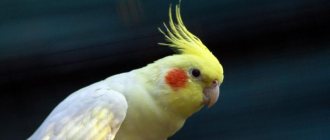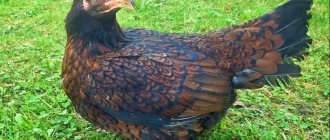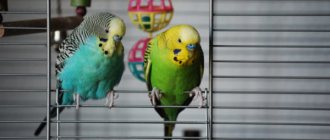Even if you have purchased the desired bird, it is not always possible to influence the speed of its learning. In addition to your efforts, it can directly depend on many factors - from the age and gender of the parrot to its physical well-being and individual character and talent.
Yes, yes, many of them are still capricious - birds can become attached to some family members and completely ignore others. In addition, remember that some parrots are great talkers, while others are ready to learn only five words.
If you are willing to take a risk and buy a potentially speaking, but still young and untrained parrot for hundreds of dollars, you can “swing” at large, spectacular species - they live longer and are able to master a decent vocabulary (not all!). If you are still a beginner in poultry farming or do not have a large amount of money, pay attention to the smaller representatives of the parrot family - they are also much more convenient in breeding and keeping.
So, TOP 10 talking parrots!
Gray parrot (Grey)
This large gray forest parrot, originally from Africa, is recognized as the most trainable in terms of “conversation”. It is grays that most accurately copy human speech. They are able to learn several hundred different words and expressions, pronounce them clearly with different intonations and vary them in sentences.
Gray parrots are very smart and curious - this partly determines their ability to learn. In nature, they themselves make many different sounds, and copy the sounds of those around them, for example, other wild birds. So, in addition to human words, rest assured that your Gray will imitate everything - laughter, coughing, sounds of operating household appliances, etc.
A widely known experiment is that of American psychologist Irene Pepperberg, who studied the ability of parrots to assimilate and use sign systems that are not characteristic of them, using human speech as an intermediary language. Her Gray Alex entered into real dialogues with a person, was proven to associate words of human language with objects, and was able to perceive the concept of shape, color and serial numbers. He could even express his own desires, for example, asking not to be left alone in a dark room.
But, of course, you need to understand that in order to achieve such amazing results, you need to spend a lot of time with the bird, starting from chick age - their intelligence and exceptional sociality require constant communication and dynamics. An improperly reared or “neglected” Gray quickly turns into an irritable and extremely loud-mouthed bird, armed with a strong beak.
Amazon
And this large, green, long-lived parrot is a representative of the American fauna. They are as vocal as Grays and are also quite sociable in nature.
And in terms of intelligence, they are not much inferior to gray parrots; they are curious, energetic, and tend to become strongly attached to their owner. Due to its great innate activity, it is also necessary to spend a lot of time with this bird and offer it some kind of games and activities. Speech learning is one of these wonderful games, especially since Amazons are very willing to make contact.
They easily remember several dozen words, learn poems and love songs. Moreover, there is evidence that this parrot is capable of learning on its own and repeating words and sounds that it was not specifically taught - it just liked them and remembered them. True, the articulation of the Amazons is not as good as that of the Grays.
Laurie
A small parrot that spoke about 70 words is a collective image of this bird. Very open and tactile birds, which in response to human love respond with an extreme degree of friendliness and disposition to new lessons. Very lively and active comrades who will definitely not let you get bored.
The trump card of this species is their color. Their name is of Dutch origin and means "clown".
This bird looks like it's ready to go on stage in its costume. Bright and rich orange, red, blue, green and yellow colors are very harmoniously collected on the body of this bird.
However, not everything is so good in the characteristics of the loris. These are birds that are quite demanding to keep. They need to choose food very carefully and take temperature control in the loris’ home seriously.
.
Cockatoo
And this parrot will entertain you not so much with his speech as with his funny antics and tricks, although he is quite capable of remembering a couple of dozen words. Like the species described above, cockatoos in nature live in flocks and are very social.
There are more than 20 species of cockatoos - and not all of them are equally trainable and imitate human speech. White-crested and yellow-crested cockatoos are considered the best talkers and “artists.”
Cockatoos are smart, active, very attached to their human owner and can become a real companion. The bird will constantly seek communication and, if you do not devote enough time to it, will communicate its dissatisfaction with sharp loud cries, although in “conversation” it has a fairly pleasant voice. These calls can become a real problem if the cockatoo is constantly bored alone and trying to attract attention.
It is important - for all its charm, affection and artistry, this type of parrot is touchy and vindictive. In retaliation for an insult or when frightened, a cockatoo can bite - and its beak is unusually powerful and sharp. Therefore, you should think carefully before getting such a pet in a family with children, especially small ones.
Lovebirds
Lovebirds (lat. Agapornis) are small birds, reaching a height of 10–17 cm. They have a large head. Their body is mainly colored green, but some parts of it may have other colors: blue, pink, yellow, red, etc. These birds have a strong and very curved beak. Despite their small size, the owners of such a beak can easily injure a person.
Lovebirds are quite agile - they run quickly and actively climb trees or other vertical surfaces.
Lovebirds are native to Africa and Madagascar. Their genus includes eight species. They have this name because it is believed that if birds live in pairs, then after the death of one partner, the second also soon dies, unable to withstand loneliness and melancholy.
It is important to know that if lovebirds are kept in pairs, they will not be able to talk. The fact is that they establish communication between themselves and do not need voice communication with a person. And even if the owner wants to teach such a bird 10–15 words , it will not be easy to do: lovebirds are difficult and difficult to teach.
Only a well-tamed parrot and one that feels constant attention is able to speak. Training should begin when the bird is one month old, but not later. The bird does not tolerate boredom and long absence of its owner. The lifespan of lovebirds is 15-20 years.
The cost of adults is 20-30 dollars.
Macaw
But this huge, incredibly impressive and elegant parrot, although it belongs to the category of speakers, may refuse to actively communicate with you “in words” even after a long training. But he will imitate all the sounds he hears around him a lot and with pleasure.
These parrots were kept at home by the Indians of pre-Columbian America, and they are still popular today, including because of their ability to learn “speech” and “singing.”
It should be taken into account that the natural voice of the macaw is very specific - sharp and loud, and they like to be active in the morning. It is also a very inquisitive and outgoing bird that is easily tamed. Despite the fact that in general macaws are quite friendly, they, like cockatoos, may well remember an insult and take revenge - and their beak and size are one of the most impressive in the family, so you need to be very careful when contacting macaws.
Female or male – who is more chatty?
Research shows that boys learn faster and speak better than girls. But at the same time, ornithologists note that female individuals reproduce complex sounds more easily and pronounce words much more clearly and understandably.
How to choose a talking parrot - Everything will be fine
And yet the result depends on the character, temperament of the bird, the owner’s ability to teach, and motivation.
Know! Parrots differentiate between the genders of people. Females will begin to speak faster to men, and males perceive women better.
Noble green-red parrot (Eclectus)
Green yellow-billed males and cherry-red black-billed females of eclectus (or noble parrots) are not yet the most common pets in our latitudes, although they have “settled” in European homes since the mid-19th century. For their intelligence and extraordinary affection towards their owner, many breeders call them ideal parrots.
Unlike the rowdy brethren that we described above, this rather large Australian parrot is quite calm, kind and even phlegmatic. He is able to become incredibly attached to a human friend, and is also unusually smart and easy to learn. It is believed that male eclectuses make contact with humans more easily, while the female’s trust must also be earned through a patient, friendly attitude.
Eclectus is quite easy to teach words, songs and even some tricks. But if the bird doesn’t like something (and at first it can be any sounds that are strange to it, like a washing machine turning on), it screams loudly and sharply.
Some tips for studying
- Expect surprises: Talking birds may make unexpected sounds, such as barks, meows, television sounds, or song tunes.
- Avoid teaching swear words : this can cause embarrassment, and it will be almost impossible to wean the bird off.
- Be patient if the bird refuses to speak or learning is quite slow. Don't scold her for this. Remember that a tame and affectionate companion dog that speaks little or nothing is preferable to a wild and aggressive parrot that speaks clearly but resists human interaction.
- Before buying , consider whether it will be comfortable to keep a parrot - large talking birds such as Amazons and cockatoos can be very loud and rarely suitable companions for apartment dwellers.
Read more about how to teach a parrot to speak.
Kalita (monk, Quaker)
Let's move on to smaller parrots. Let's start with the green monk parrot, which, although originally from South America, has already reached Europe and feels great in the wild, for example, in the parks of Barcelona. And in their homeland, in some places they are even considered pests that destroy agricultural crops - for example, they love to “frolic” in apple orchards.
On the other hand, blue-winged monk parrots are the most popular feathered pets in Brazil for their easy, cheerful disposition and ability to learn human speech.
Be prepared for the fact that in addition to words, Kalita will happily repeat all other sounds - from a cat's meow to the ringing of an alarm clock or the whistling of a kettle. In addition, in nature, these parrots often scream loudly; it is possible that the monk will have the same fun in the apartment if he has nothing to do.
However, these are very smart birds, they are active, easily and strongly attached to humans, quickly tamed, love to play and communicate, although they are also very likely to be offended by lack of attention. It is interesting that monks are terrible owners; they love to collect various objects of interest to them in their cage and protect them; they can even bite the hand of their beloved owner if he encroaches on the bird’s treasures.
Rosella
Rosella (lat. Platycercus) is also quite popular among parrot breeders. They have beautiful variegated plumage with almost all colors included. They are compact in size—they grow up to 35 cm. You can recognize a rosella by its pronounced cheeks; depending on the species, they are white, yellow or blue.
Rosella's habitat is Australia.
Speakers from Rosella are average - they can learn up to 10 words and a couple of phrases . But they really love to sing. Moreover, the song they perform is usually melodic and pleasant to the ear.
Representatives of this breed can be classified as smart and friendly birds. If the owner finds a common language with such a bird, he will receive a wonderful companion who will constantly attract his attention. However, a peculiarity of birds is their aggressiveness towards other brothers - it is better not to keep budgerigars in the same cage with them.
Anyone who is planning to get such a bird should know that it does not tolerate changes in living conditions and food, and is subject to stress - even sharp sounds can provoke it. Therefore, they do not accept raising their voices. You need to be gentle and affectionate with them, and then they will return the favor.
Since rosella requires constant attention and taming, they are not recommended for purchase by those who have not yet had experience with parrots. Rosellas do not live very long - about 20 years.
The cost of one individual starts from $100.
Indian ring-necked parrot (Cramer's ringed parakeet)
This beautiful, intelligent, medium-sized bird in nature has mostly greenish plumage with a black necklace around the neck, but many colored forms have been bred today for home keeping - from snow-white or blue to motley.
This species has also been known to people since ancient times, it is very unpretentious, easily adaptable and is one of the most common feathered pets.
The main disadvantage of keeping a necklace parrot at home is its extremely unpleasant sharp squeal in case of fright or stress. Otherwise, this bird fits perfectly into the human “flock”.
Kramer's parrot is good-natured, cheerful, loves to play and is a good learner. He is able to imitate various sounds, remember and reproduce dozens of words, and his “speech” will be quite clear. During the period of courtship with the female, the male constantly chirps melodiously.
What other talking parrots are there?
Of course, those listed are not the only representatives of talking parrots.
The Amazons are pretty smart talkers. They are large parrots and have pleasing plumage. They remember from 40 to 60 words.
There are quite bright birds - eclectus. They are also quite large, capable of remembering about 50 words.
Almost any breed of parrot can be trained to talk! Even lovebirds can learn about twenty words. The main thing is a skillful approach to learning and diligence in this matter.
Corella (nymph)
The small graceful Australian nymph parrot, or cockatiel, is perhaps the best choice for a beginning birder who dreams of a “talking” pet. It is small in size, inexpensive, fairly unpretentious in content and is quite capable of imitating human speech.
Corella is the closest relative of the cockatoo. This bird naturally lives in flocks in the savannah, and appears in European homes only in the middle of the 19th century and immediately gains great popularity. Moreover, as in the case of the previous parrot, breeders tried to develop many of its colored decorative forms.
With adequate training at home, the cockatiel is quickly tamed and can memorize 100-150 words, as well as simple melodies. Males sing well, imitating street birds - nightingales, tits, magpies. If you are not able to devote a lot of time to the nymph, be sure to buy her relatives for company - otherwise this parrot will quickly get bored and wither away, as it is highly susceptible to stress and mood swings.
Recommendations from ornithologists
- If the parrot has not adjusted to the new place and is not accustomed to the person, then starting training is pointless.
- Small parrots (budgies) are trained from about 1.5 months of age, while representatives of medium and large breeds (Corella, Amazon, Rosella, Gray) - from 3 months.
- The pet’s success must be rewarded with treats: fruits, seeds, nuts, etc.
- It is much easier for parrots to pronounce words with vowels “a”, “o” and consonants – “k”, “r”, “t”.
- You need to train every day for at least 15 minutes 2-3 times a day.
- If the bird is not in the mood and ignores attempts to exercise, then it is better to postpone communication to another time.
- There can be no quick results. Training requires a lot of time, effort and patience.
Budgie
Miniature, unpretentious and sociable budgies are perhaps one of the most beloved feathered pets in Russian families. But not everyone knows that even these little ones will be able to “speak” with proper training.
This bird also comes from Australia, is flocking, sociable, and good-natured. In the wild, only green budgies are found, while in domestic breeding today there are many colored forms. The budgerigar came into cultural breeding in Europe only in the 19th century and very quickly became incredibly popular.
In captivity, budgies are very open to communication, adapt well to any environment, are energetic and cheerful. As with most other parrots, males are the best candidates for training. They repeat the learned words and phrases quite clearly, in a gentle, pleasant voice. At the same time, oddly enough, in the end the articulation of learned words in females turns out to be much better.
Keep in mind that if you have several budgerigars living together, teaching them to talk “as a whole class” will be much more difficult than teaching them alone. In the company of their own kind, the birds have enough interesting and fun communication in addition to your lessons, so it will be extremely difficult to concentrate on teaching your pets.
How to choose a talker
Before choosing, the owner needs to make sure that the bird will suit his lifestyle. After all, a pet needs not only proper care, but also care.
Choosing the right talking parrot
The first thing you want to pay attention to is age. It is best to choose young birds that quickly adapt to their new habitat. Adult and established parrots are set in their own way and will not take kindly to changes in their already established way of life. And during adolescence, most parrots go through a phase called bluffing. Their behavior at this stage is aggressive: they bite everything and everyone, attack their owners.
The second is the place of purchase. I do not recommend the bird market under any circumstances. The pet store is also highly questionable. I advise all my acquaintances and friends to purchase parrots from professional breeders or in a nursery.
Senegal parakeet
The African yellow-green Senegal parrot (a close relative of the gray parrot) is not only a good sound imitator, but also a talented trickster.
This parrot is very friendly, unpretentious, active and smart. Senegalese easily get used to people, willingly learn a dozen or two words and repeat them more or less clearly, love to play and solve puzzles.
In nature, they live in colonies of thousands, inhabiting wooded areas and savannas. Because these birds often feed on grain crops, local farmers consider them pests. In captivity, it is a “one-owner bird.” No matter how affectionate and attentive a Senegal parrot can be with a familiar person, it will be just as aggressive and unpleasant with a stranger.
In addition, he will definitely try to dominate your family, with loud screams or even an attack, trying to drive out of the room a person he does not like or another pet in the fight for the unlimited attention of the chosen owner. To properly raise this intelligent bird, you will need not just one hour a day, but much more time - take this into account before you get such a feathered friend.
If you have enough time, perseverance and patience, teaching any of these beautiful parrots listed above to speak is not very difficult. However, in addition to the “entertainment program”, it is important to remember that each of these birds is an exotic from tropical countries, requiring a fairly serious approach to the equipment of the place of residence and living conditions. Do you have enough strength, knowledge and skills to provide such a pet with decent living conditions? Please think about this before you get a beautiful and prestigious talking “toy” that will only make your neighbors jealous.
What is the difference between a chick and an adult?
Ornithologists recommend choosing a budgerigar no older than six months. The growing chick has a flexible psyche, it is easier to tame, and quickly gets used to its new home. In order for your parrot to speak, you need to start training it as early as possible. How to avoid making a mistake with age when purchasing?
Signs of young individuals:
- clear waves on the back and head from the cere. After the first molt, the feathers from the crown to the back of the head acquire one color, without inclusions or patterns;
- black spots on the beak, dark irises, without rings;
- short tail;
- matte shade of feathers, without shine.
You need to examine the bird in the company of relatives. By comparing different individuals, you are more likely to select a young parrot.











